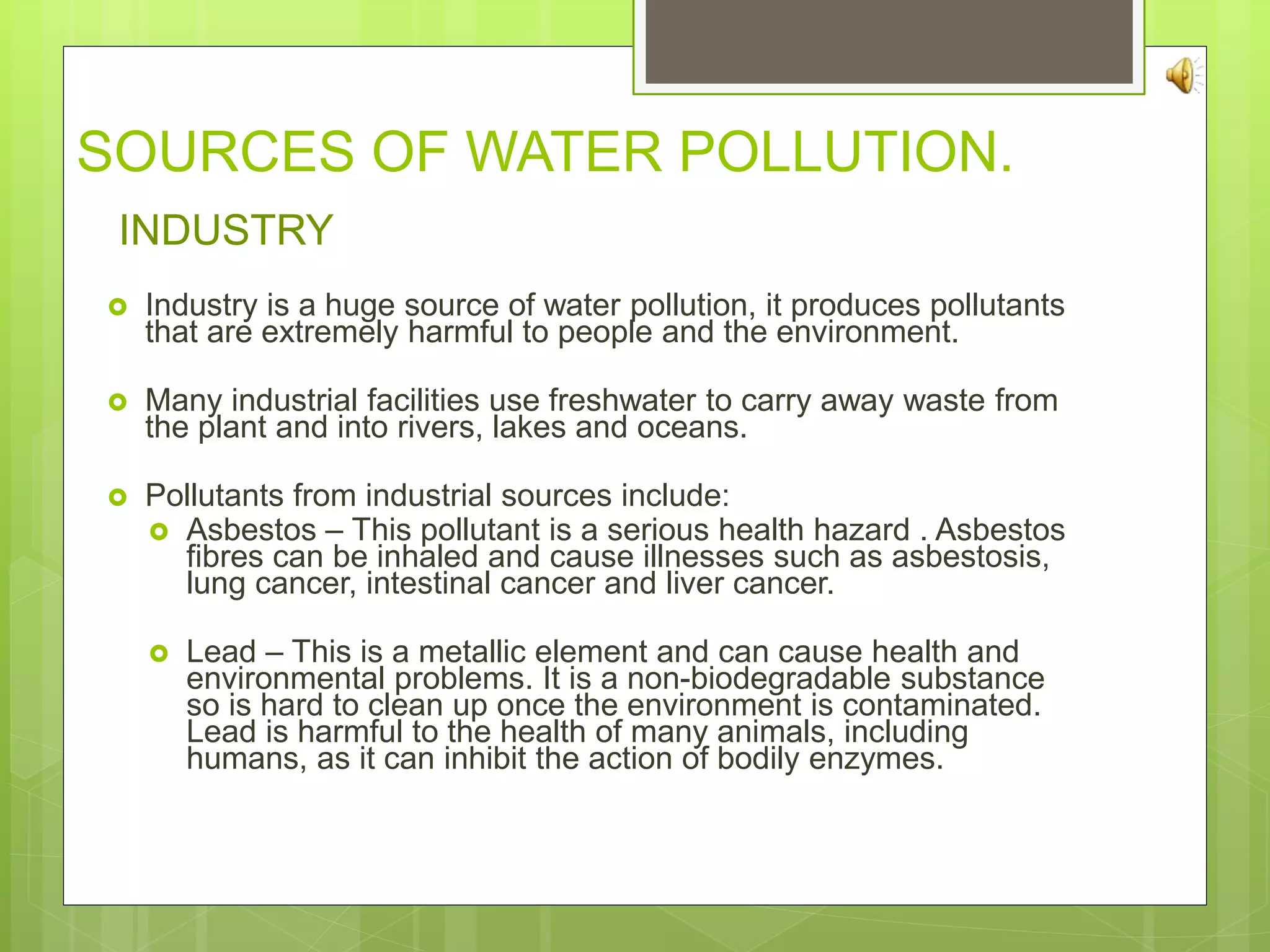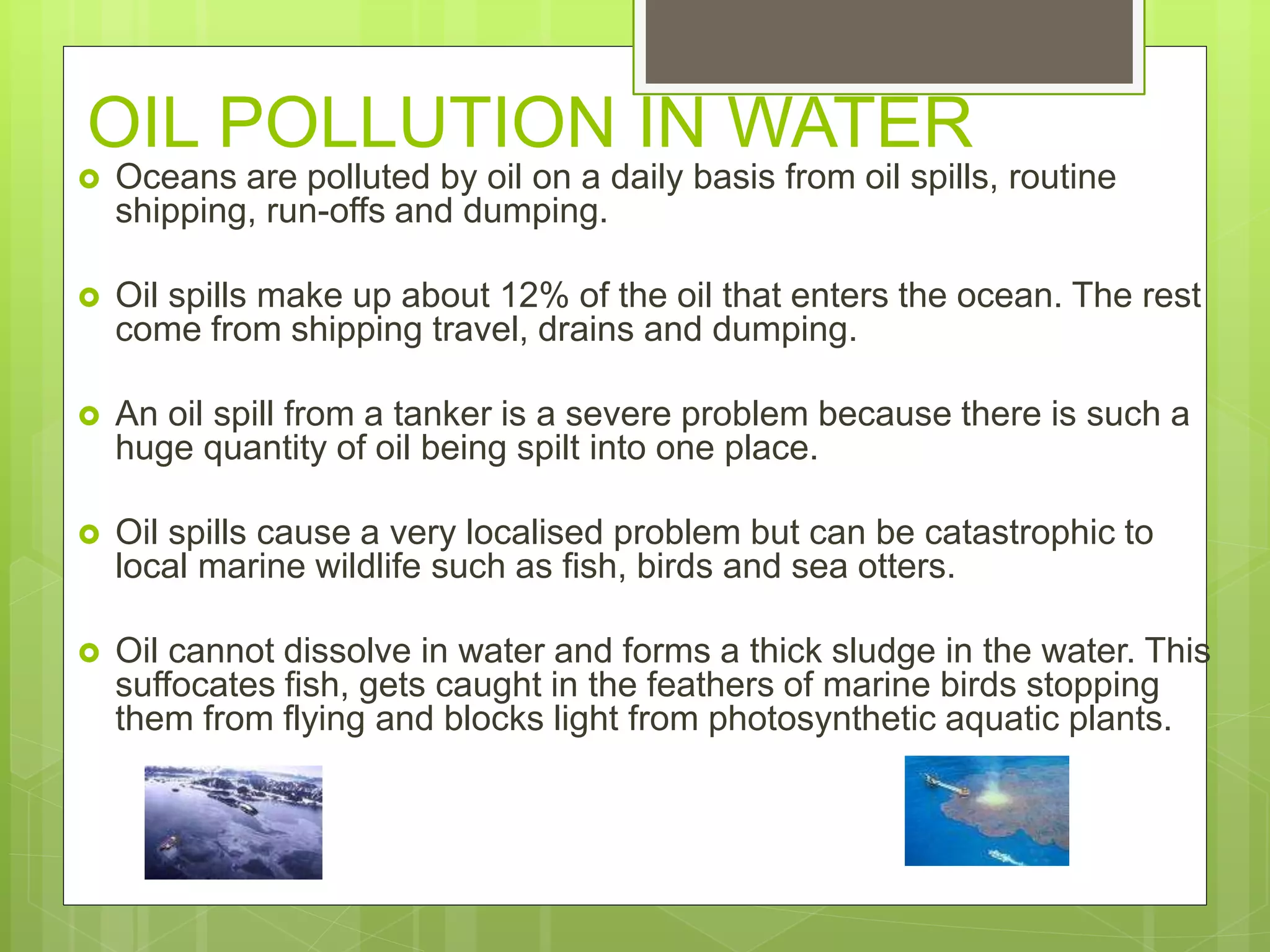This document discusses various types of water pollutants including pathogens from sewage, organic waste from industrial and agricultural activities, chemical pollutants from industry and mining, excess sediments, and excess nutrients that can cause eutrophication. It provides examples of point source pollutants from factories and non-point source pollutants from agricultural runoff and urban areas. Prevention methods include reducing water usage, properly disposing of household waste, and minimizing the use of fertilizers and pesticides.
































